Newsletter: Mass incarceration touched their family. Las Nietas de Nonó tackle its legacy in performance
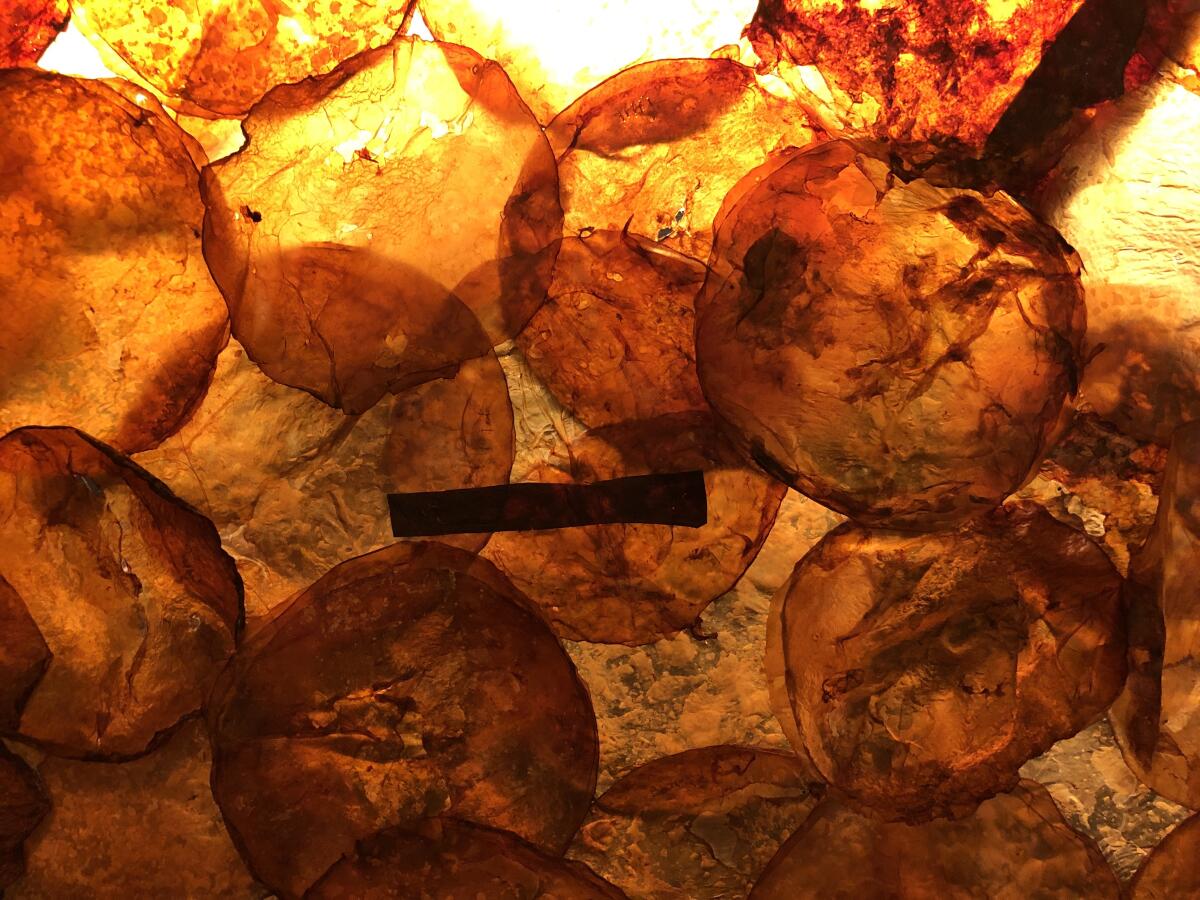
- Share via
You say tamal, I say tamale. And it’s making me hungry. I’m Carolina A. Miranda, arts and urban design columnist for the Los Angeles Times, with all the culture news:
The humanity
In May of 1992, the month after a jury in Simi Valley acquitted four LAPD officers of brutalizing Rodney King, and swaths of Los Angeles remained singed by the subsequent uprising, Jamaican cultural theorist Sylvia Wynter wrote a missive to her colleagues at Stanford University. “No Humans Involved,” as her open letter was titled, was in response to a radio news report about how the police often used the acronym “NHI” (No Humans Involved) to describe cases involving people on the fringes of society: Black people and Latinos, sex workers and the poor.
“Stephen Jay Gould argues that ‘systems of classification direct our thinking and order our behaviors,’” wrote Wynter at the time. “By classifying this category as N.H.I. these public officials would have given the police of Los Angeles the green light to deal with its members in any way they please.” The letter was a deeply erudite examination of the ways in which language, and the taxonomies it creates, affect how people might be accorded power or, inversely, denied their humanity. It also was a call to her fellow educators to consider the ways in which academia had supported these notions.
The ideas expressed in Wynter’s communiqué are ones that continuously echo in the culture. (A September essay in the Nation about Afropessimism, written by the beloved cultural critic Greg Tate, who died this week at 64, delved into similar themes of the less-than-human.) Her open letter has more directly inspired other cultural phenomena too — such as an ongoing exhibition at the Hammer Museum that likewise bears the title “No Humans Involved.”
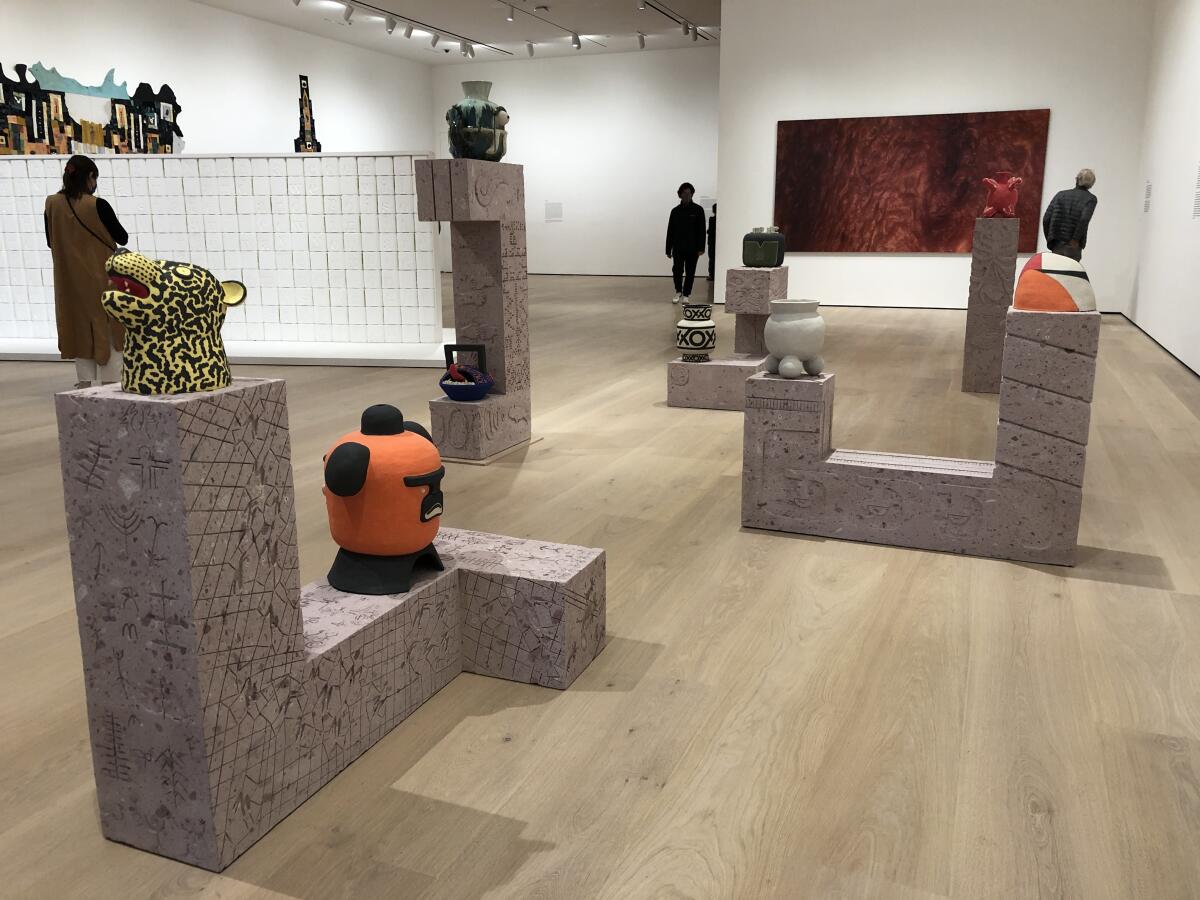
Organized by Hammer associate curator Erin Christovale, with curatorial assistant Vanessa Arizmendi, the show brings together pieces by seven artists and collectives from around the world that dig into elements of what is considered human, inhuman and nonhuman. Though planned in advance of the COVID-19 pandemic and the uprisings of 2020, Christovale says its themes became more resonant.
“It was amazing to watch last year unfold and think about her text,” says Christovale of Wynter’s work. “The thing about the show is that the themes of it — around this idea of who is humanity in this Western society — I think those larger things, regardless of last year, really held up.”
The exhibition is small and its broad themes make it unwieldy in part, but it brings together some compelling works.
Make the most of L.A.
Get our guide to events and happenings in the SoCal arts scene. In your inbox once a week.
You may occasionally receive promotional content from the Los Angeles Times.
A poignant sculpture by Wilmer Wilson IV, carved out of salt blocks, nods to a period after World War I in which Black veterans were the target of attacks in Mississippi, while a video work mounted to the ceiling, by artist studio WangShui, evokes the light beams associated with the colonizing aliens from Octavia Butler’s Xenogenesis trilogy.
On the other side of the gallery, a temple-like space created by Las Nietas de Nonó, the duo of mapenzi nonó and mulowayi nonó, will serve as an environment for three free performances that kick off on Sunday evening.
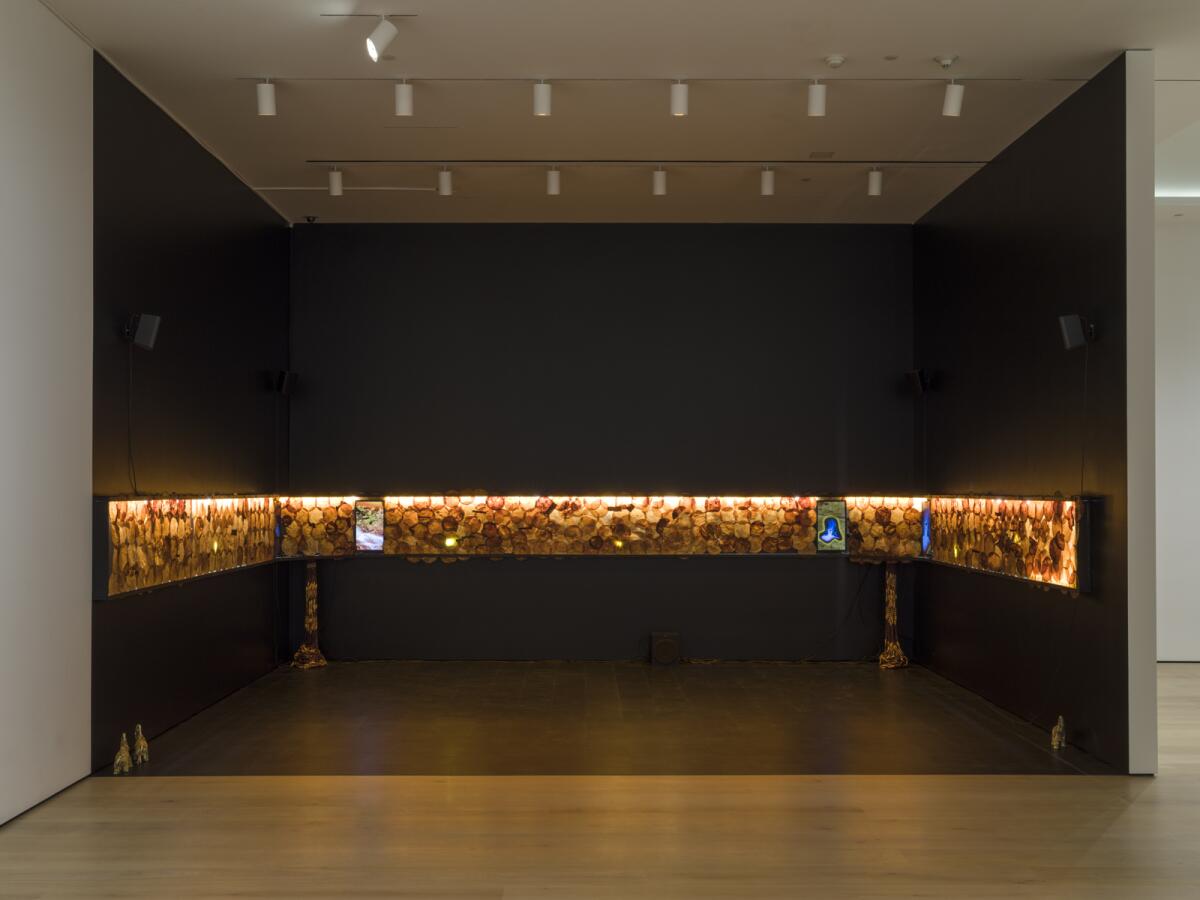
The Nonó siblings are based in San Antón, Puerto Rico, where they maintain a studio that functions as a creative space and an arts center for the community. Their work draws from the land (the studio resides on land that once belonged to their grandfather) and from familial experience — but also the ways in which those experiences have been shaped by the hand of the state. Their installation at the Hammer, titled “No More Tears,” was inspired by the imprisonment of their cousins, the Salgado brothers.
They do not share the reason behind their cousins’ incarceration, but in a telephone interview earlier this week, they did discuss the policies that led to it, as well as its effects: namely, Mano Dura (which translates roughly to “iron fist” in English), a period of crackdowns in Puerto Rico that began in the 1990s as the island’s economy collapsed and violence related to narcotics trafficking spiked. The police presence swelled, as did the prison population, with many prisons growing so crowded that Puerto Rican inmates were sent to private prisons in the United States to serve out their sentences — separating them from their families, sometimes for decades.
It was a period — akin to the War on Drugs in the U.S. — when poor Black and brown men were treated as expendable, a threat to be neutralized with punitive sentences. It was also largely for naught: A report published by the United Nations Development Program in 2013-14 described Mano Dura policies as a “failure,” doing little to mitigate crime or tackle any of the underlying social and economic issues that gave rise to it.
“No More Tears” delves, in abstracted ways, into some of this history as it affected the Nonós and the Salgados: loss, absence, isolation and dislocation. The physical installation consists of a dimmed space, open to one side, that is covered in a slim band of dried-out scobys, the fermentation discs employed in the production of kombucha. It’s a cheap, found material that Las Nietas sourced locally in Los Angeles (a way of limiting the amount of waste generated by their art). Backlit from within the gallery wall, the scobys resemble glowing fish scales. Embedded into these are video monitors showing footage of their cousins and natural landscapes.
“There is a fragility to the material,” says mapenzi of using scobys. “We’re interested in that fragility, which can also represent this process of incarceration. When someone comes out of prison, there is real fragility in the mental and physical state of the person. We wanted to talk about the fragility and abilities of the post-carceral condition.”
The Salgados have been released from prison but their imprisonment is an experience they still carry with them. Las Nietas aren’t saying what exactly their upcoming performances will consist of — though we can certainly expect elements of the theatrical and of restorative rite.
“For us, through conversations, it’s been about trying to understand what their life was in jail,” says mulowayi. “And by creating a fiction, creating a space where there is healing.”
A process that perhaps will bring some humanity to a population — the incarcerated — who aren’t always accorded such status in the public eye.
Las Nietas de Nonó, “No More Tears,” will be performed at the Hammer Museum on Dec. 12, 16 and 18 at 5 p.m.; admission is free. “No Humans Involved” is on view at the museum through Jan. 9; hammer.ucla.edu.
On and off the stage
Steven Spielberg’s “West Side Story” is landing in theaters this week, and the takes are landing fast. Times film critic Justin Chang dug the flick. “Spielberg’s movie may be rougher, grittier, more lived-in and, in terms of cultural representation, more truthful than its 1961 cinematic incarnation,” he writes. “But it is also more unabashedly classical, more radiantly stylized, than just about anything a major American studio has released in years.”
New York Times film critic A.O. Scott writes that the film is far from perfect but it feels “bold, surprising and new.” “The seams — joining past to present, comedy to tragedy, America to dreamland — sometimes show,” he writes. “But those seams are part of what makes the movie so exciting.”
The L.A. Times’ Greg Braxton has a look at what’s changed between the old version and the new.
The film’s redo, which includes a new book by Tony Kushner, has raised questions about why Hollywood keeps remaking a work with a troubled legacy when it comes to Latino representation. As Julio Ricardo Varela writes in the Washington Post, “There still needs to be a critical discussion about why this one story has been the only concrete mainstream example of the Puerto Rican experience.”
The New York Times held a a lively debate on these and other themes with Tony Award-winning playwright Matthew López, theater critic Jesse Green, contributing writer Carina del Valle Schorske and Times critic fellow Isabelia Herrera — moderated by editor Scott Heller.
And, because I love a throwback: Here is the L.A. Times’ 1961 review of the original film, which describes Leonard Bernstein’s score as “harsh.” Harsh.
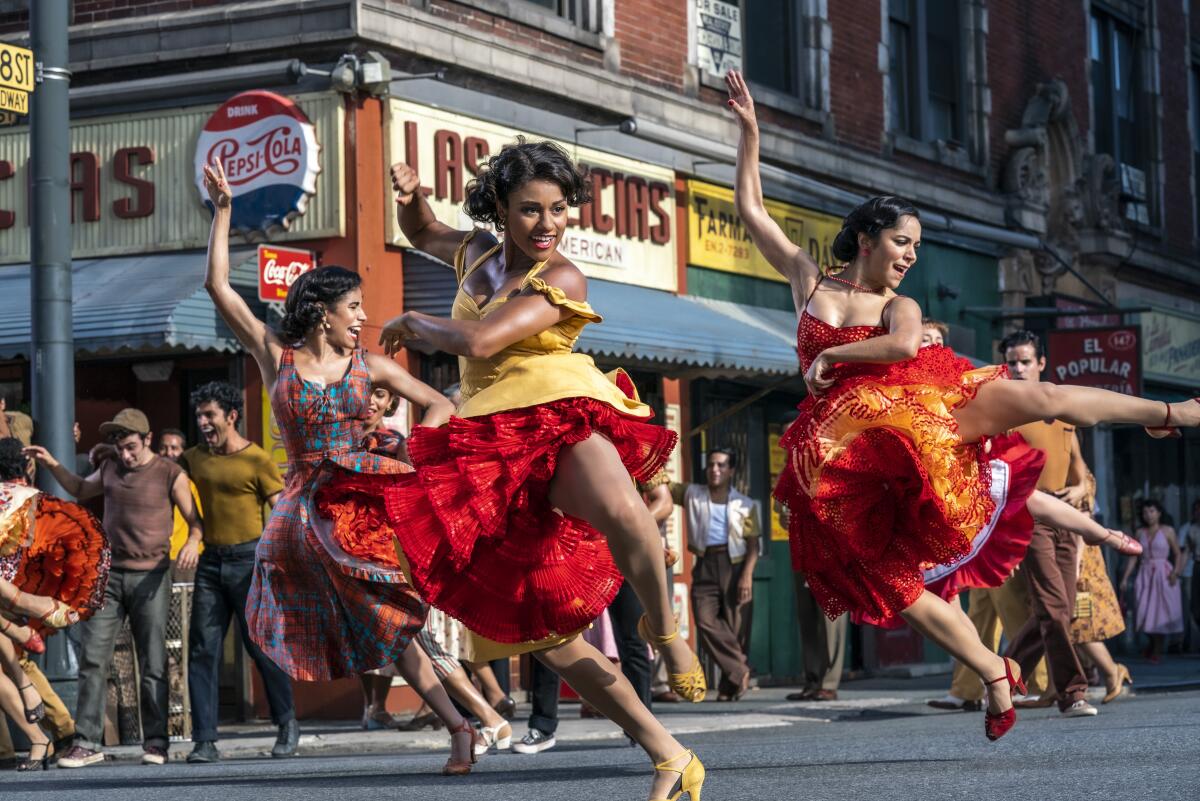
Times theater critic Charles McNulty has reviewed the ongoing production of “A Christmas Carol” at the Ahmanson Theatre, starring Bradley Whitford, Kate Burton and Alex Newell, and I think it’s best to ditch the summaries and just give you his opening line: “Before I’m cast as the Scrooge of drama critics, let me start this review of ‘A Christmas Carol’ by stressing just how much I loved the lighting.” And that’s just the beginning.
Visual arts
The Getty Villa has a new exhibition devoted to the work of Flemish Baroque painter Peter Paul Rubens, and Times art critic Christopher Knight reports that it’s a perfect setting to see the work of a painter who was inspired by classical history and myth. “Rubens: Picturing Antiquity,” he writes, “is a concise outline of the ways in which the artist exploited the classical past. His aim: to advocate for the aggressive Catholic Counter-Reformation that was roiling 17th century Europe.”
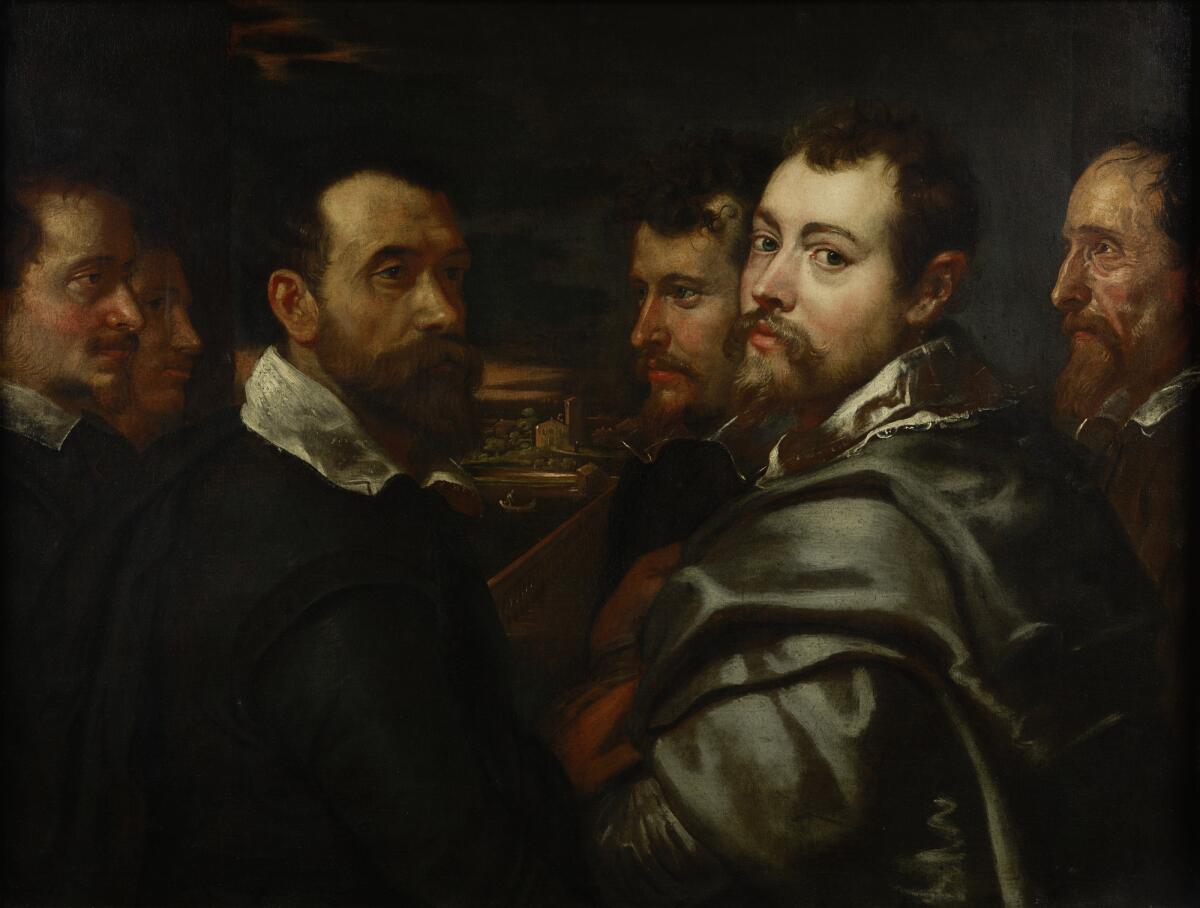
Some of the more memorable images of Princess Diana were taken by royal photographer Anwar Hussein, a Tanzanian-born lensman who gave the world a more informal view of the monarchy. Hussein, whose work is at the heart of an exhibition at Santa Monica Place, tells contributor Ingrid Schmidt that he couldn’t have imagined his life’s trajectory as a child. “The only picture I had seen of the queen was on a stamp,” he says.
Design time
I spent some quality time at an installation by German-born artist Florian Hecker at the Fitzpatrick-Leland House, a Hollywood Hills home designed by Rudolph Schindler. The installation, titled “Resynthesizers,” dwells on the vagaries of perception: how individuals might interpret a scent or hear a sound. It also dives into synthesis, the history of fragrance chemistry and the nature of space. Sound like an intellectual rabbit hole? I explain it all right here.

The show was organized by the art group Equitable Vitrines with the support of the MAK Center for Art and Architecture, which manages the Fitzpatrick-Leland House. The graceful 1936 structure, which sits on a crest overlooking Laurel Canyon, was the architect’s only spec house and was donated in 2008 to the MAK Center, which has employed it as a site for a designer-in-residency program, among other projects.
Arts deputy editor Craig Nakano once got to hang with Julius Shulman as he photographed the home. Jealous!
Enjoying this newsletter? Consider subscribing to the Los Angeles Times
Your support helps us deliver the news that matters most. Become a subscriber.
Plus, The Times’ annual 101 Best Restaurants list, spearheaded by food critic Bill Addison, lands in print and online this week. And it’s got burritos and biscuit sandwiches and pizza and Peruvian-Chinese food!
What does this have to do with design? Well, I managed to wheedle my way into the special issue with a story about Richard Gomez of Revolution Carts, who has accomplished what once seemed impossible: He designed a sidewalk vending cart that meets the standards of the L.A. County Department of Public Health. Better yet, it’s a beautifully executed piece of retro-modern design.
While I was reporting the story, the Tamalero, as his cart is known, was still in production, so we could only show a rendering. But as The Times went to press, the first carts rolled off the assembly line and Gomez sent me a pic. Lookin’ good.
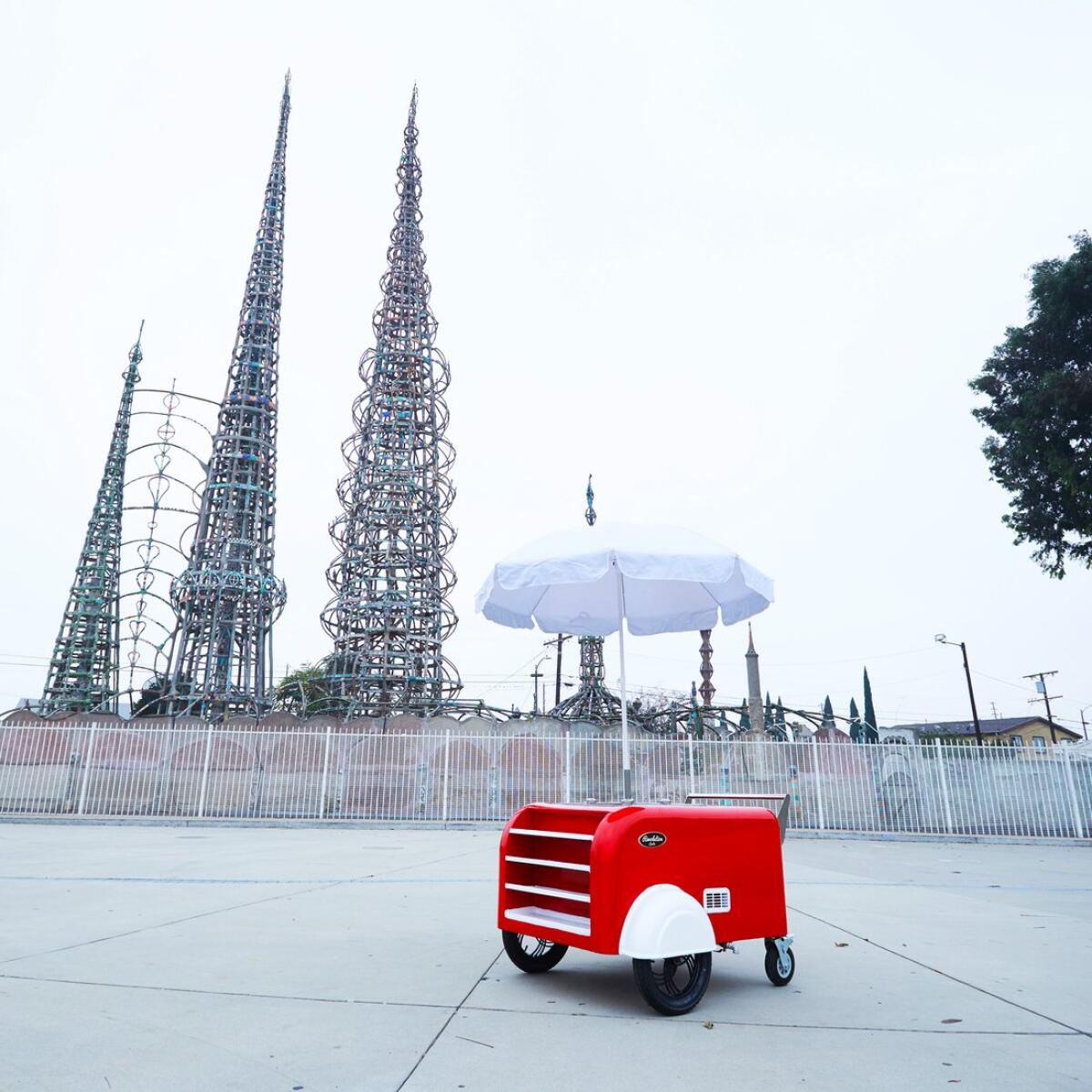
Classical notes
The L.A. Phil gave its last concert of the year last weekend, and classical music critic Mark Swed reports that the performance — which featured a composition by Julia Adolphe and conductor Xian Zhang on the podium — found the orchestra in its “comfort zone.” And that zone is all about pushing boundaries: “What to the rest of the orchestra world would seem a notable effort in promoting diversity is simply L.A. Phil business as usual,” he writes. “The program included new and recent music by women and featured a woman conductor, not to mention a composer of color.”
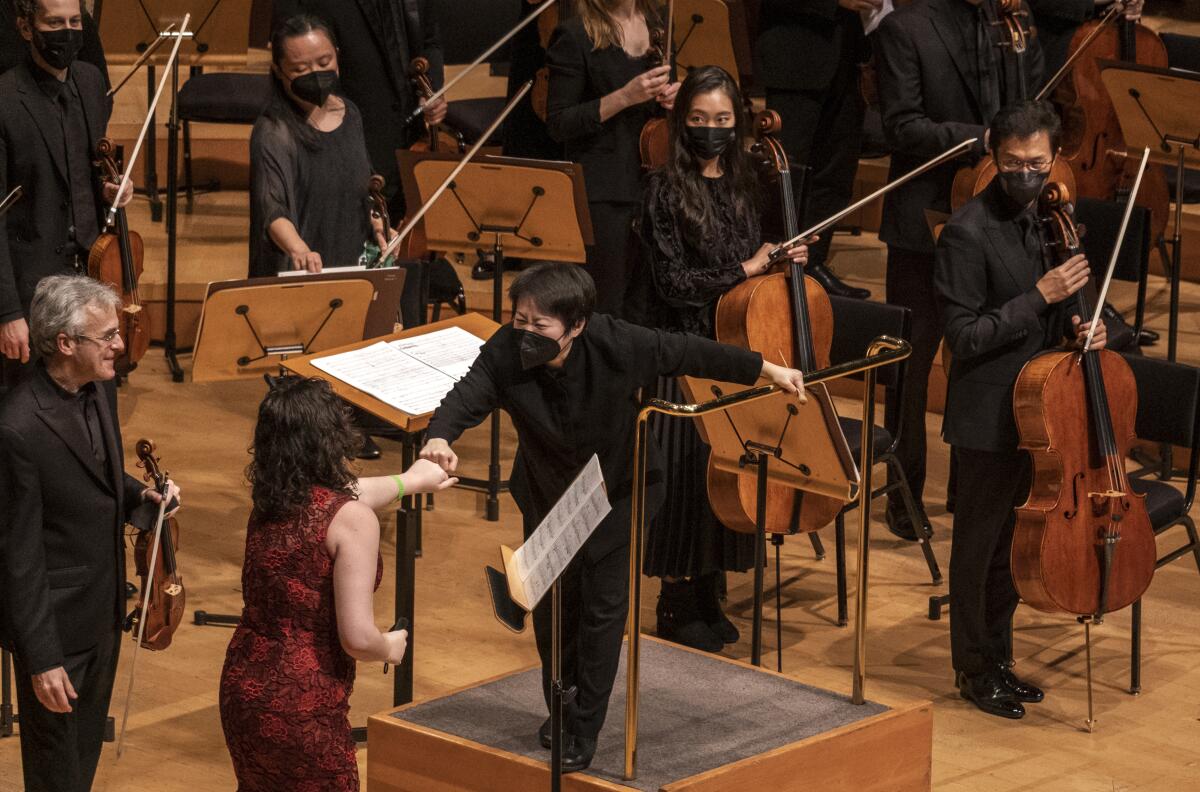
There is one boundary that is not being pushed at Disney Hall — and that is pandemic safety in the face of the Omicron variant, reports Jessica Gelt. The Los Angeles Master Chorale canceled its 40th “Messiah” sing-along at the recommendation of the L.A. Department of Public Health. The chorale is replacing the event with a free outdoor sing-along on the Music Center’s plaza on Dec. 20.
Essential happenings
Do more than just shop ’til you drop. Matt Cooper rounds up the essential happenings for the weekend, including a Violins of Hope concert at the Soraya and a performance of “What Remains” at REDCAT, a collaboration between artist and poet Claudia Rankine and choreographer Will Rawls.
And don’t forget the galleries!
At Blum & Poe in Culver City, the main space has been turned over to São Paulo-based artist Sonia Gomes, who makes assemblages from natural flotsam studded with fragments of the manmade: a fishnet, an old wedding dress, a bedspread. A labyrinthine installation suspended from the ceiling in one room seems to quiver with life. Upstairs, Los Angeles painter Umar Rashid, whose work was on view as part of the Hammer’s most recent “Made in L.A.” biennial, presents a new chapter in his ongoing historical epic chronicling the colonial foibles of the fictional Frenglish Empire — and I’m digging the canvases that launch the narrative into space.
Across town, in downtown L.A., Luis de Jesus Los Angeles has a trifecta of shows that engage architecture in different ways. Nicolas Grenier uses a labyrinth structure as a site for presenting diagrammatic paintings that chart questions of governance (and more metaphysical questions of color), while in a separate space, painter Laura Karetzky compellingly riffs on the nature of the window — as structure, but also as metaphor. In addition, artist Edra Soto dwells on the memories and social signifiers embedded in architecture, reproducing brise soileil structures typical of vernacular Puerto Rican design, but placing within them tiny transparency viewers that feature images of people and places. To see the detail, you’ll have to check it IRL.
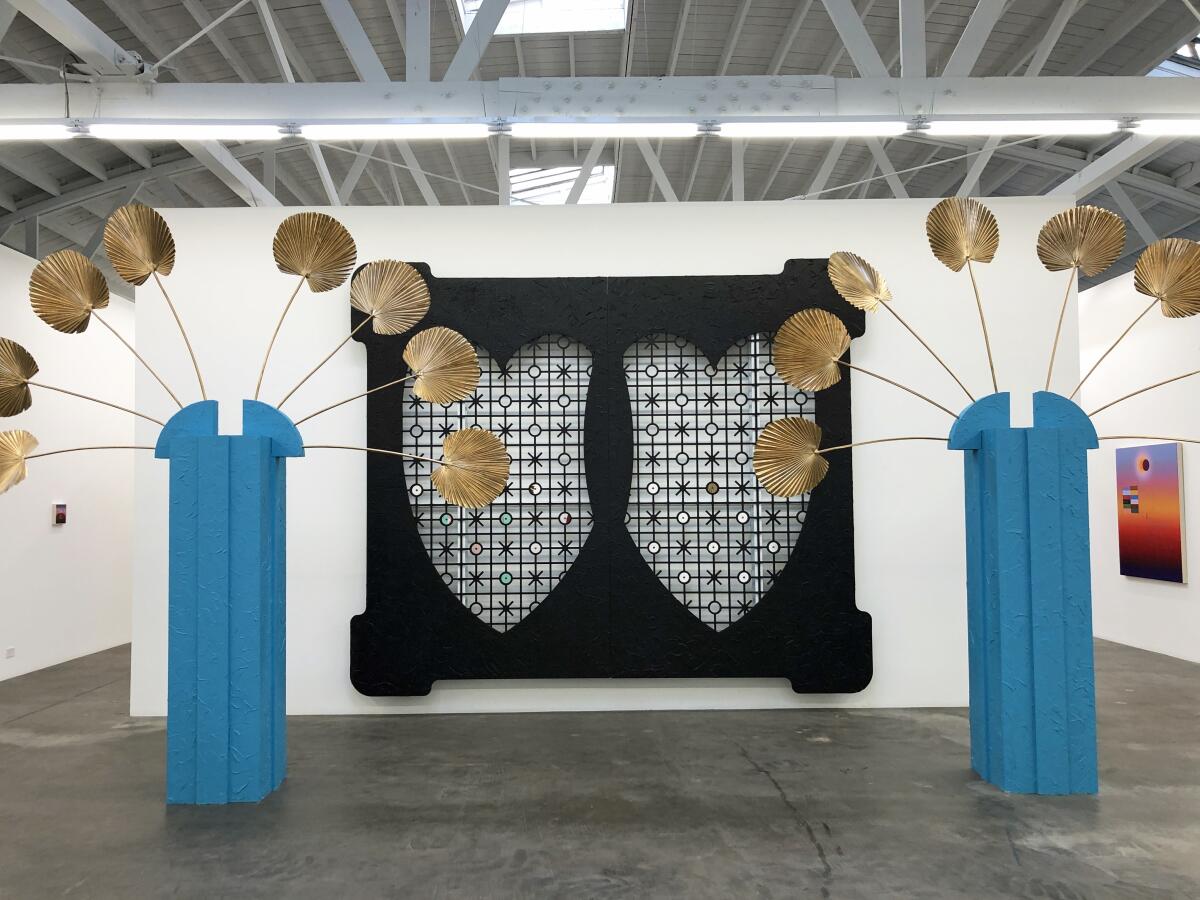
Remembering Greg Tate
The world of culture is reeling from the death of Greg Tate, an influential critic who first made a name for himself writing about music for the Village Voice in the 1980s, then expanded to pen sprawling, lyrical essays that touched on art, sci-fi, film and literature, in the process highlighting the deep contributions of African Americans to U.S. culture.
In an appreciation in The Times, contributor RJ Smith, who worked with Tate at the Voice in the early ’80s, describes “a great voice of New York opinion-making.” And New York Times music critic Jon Caramanica describes writing that “froze and shattered time, supercharged neurons, unraveled familiar knots and tied up beautiful new ones.”
In a 2016 tribute in the New Yorker, culture writer Hua Hsu described a writer whose “best paragraphs throbbed like a party and chattered like a salon.”
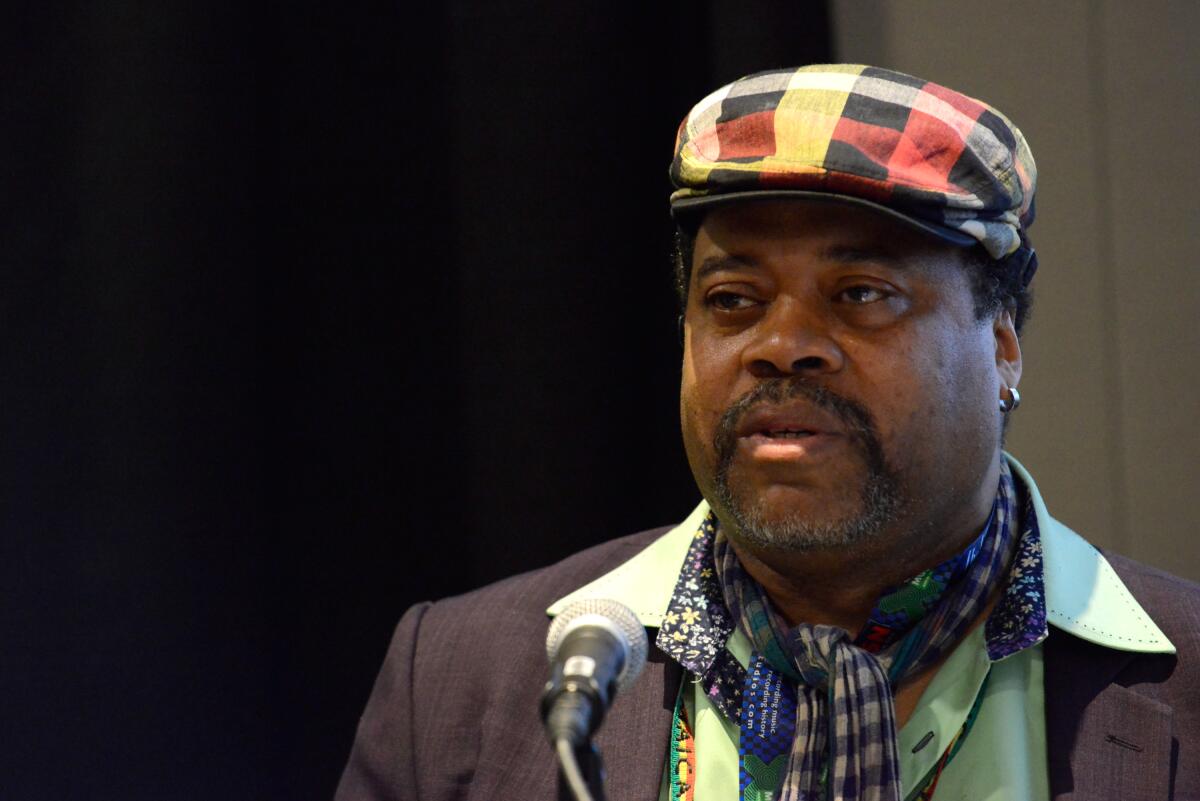
Upon hearing the news of his death, I went back and reread one of his most renowned Village Voice essays — about painter Jean-Michel Basquiat. Basquiat, he wrote, “gave equal attention to exhuming, exposing, and cutting up the nation’s deep-sixed racial history, in all its nightmarish, Neo-Expressionist gory. If you’re Black and historically informed there’s no way you can look at Basquiat’s work and not get beat up by his obsession with the Black male body’s history as property, pulverized meat, and popular entertainment.”
Plus, Tate, on the Toure Show, talking about how jazz influenced his writing.
Rest in power, good sir.
In other news
— The Thomas Guide is baaaaack!
— When a Miata is much more than a car. Love this essay by Christina Catherine Martinez.
— Coco Fusco reviews a pair of new books about Cuba, including one that explores dance and its relationship to the state.
— Former UC campus architects have come out in opposition to Munger Hall, the windowless dorm proposed for UC Santa Barbara, describing the project as “a disaster in the making.”
— The Metropolitan Museum is removing the Sackler name from its galleries.
— Bloomberg CityLab’s Kriston Capps has a look at Hiroshi Sugimoto’s plan to revamp the Hirshhorn Museum’s sculpture garden in Washington, D.C.
— L.A.’s Underground Museum will reopen on Jan. 12 with a show of Noah Davis’ paintings organized by Helen Molesworth.
— A new art space and residency program called Horizon is scheduled to open in downtown L.A. in February, with Christopher Y. Lew as chief artistic director and May Xue as CEO.
— Brittney Johnson will be the first Black actor to play Glinda full-time in “Wicked” on Broadway.
— A digital camera that gets dark skin right.
And last but not least ...
Tilda Swinton as libraries, a thread.
The biggest entertainment stories
Get our big stories about Hollywood, film, television, music, arts, culture and more right in your inbox as soon as they publish.
You may occasionally receive promotional content from the Los Angeles Times.




